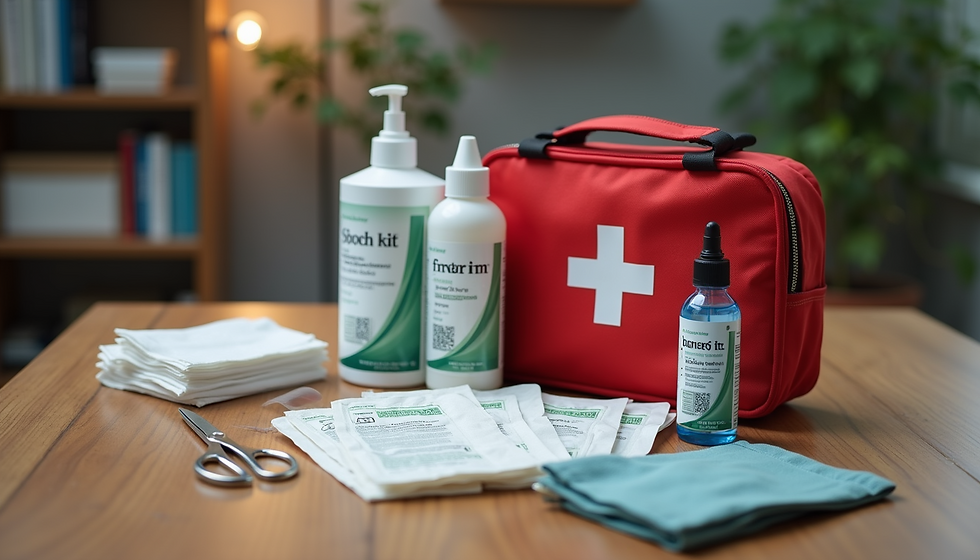Enhance Safety with Emergency Response Courses
- Cully Mulryan

- 1 day ago
- 3 min read
Safety is not optional. It is essential. Every workplace, school, daycare, and caregiving environment must be ready for emergencies. I know firsthand how critical it is to prepare for unexpected situations. Emergency crisis training equips you with the skills to act fast and save lives. It builds confidence and reduces panic when seconds count.
Why Emergency Crisis Training Matters
Emergencies happen without warning. Fires, chemical spills, medical incidents, or natural disasters can strike at any time. Without proper training, people freeze or make mistakes. Training teaches you to respond calmly and effectively.
In the chemical and industrial sectors, risks are higher. Hazardous materials and complex machinery increase the chance of accidents. Emergency crisis training helps workers understand dangers and how to handle them safely.
For daycare providers, teachers, parents, and caregivers, emergencies involve children’s safety. Knowing how to evacuate, perform CPR, or manage choking can save young lives. Training prepares you to protect those who depend on you.
Key benefits of emergency crisis training:
Learn to identify hazards quickly
Master evacuation procedures
Practice first aid and CPR
Understand communication protocols
Build teamwork and leadership skills

What Emergency Crisis Training Covers
Training programs focus on practical skills. They combine classroom learning with hands-on exercises. This approach ensures you can apply knowledge in real situations.
Typical topics include:
Risk assessment - Spotting potential dangers before they escalate
Fire safety - Using extinguishers, alarms, and evacuation routes
First aid and CPR - Treating injuries and medical emergencies
Chemical spill response - Containment and cleanup procedures
Communication - Alerting emergency services and coordinating teams
Evacuation drills - Practicing safe and orderly exits
Each module builds your confidence. You learn to stay calm and act decisively. Training also covers legal and regulatory requirements relevant to your industry or setting.
How to Choose the Right Training Provider
Selecting a reliable training provider is crucial. Look for companies with experience in your sector. They should offer courses tailored to your specific risks and needs.
Check for:
Certified instructors with real-world expertise
Hands-on training opportunities
Up-to-date curriculum aligned with industry standards
Flexible scheduling to minimize work disruption
Positive reviews and proven results
I recommend exploring emergency response courses from Chemical Coast Industrial Training, LLC. They specialize in practical, hands-on safety training for chemical and industrial workers. Their programs prepare your team for real-world challenges, making your workplace safer.

Implementing Training in Your Organization
Training is only effective if integrated into your safety culture. Here’s how to make it work:
Schedule regular sessions - Refresh skills and update knowledge
Involve all staff - Everyone should know emergency procedures
Conduct drills - Practice scenarios to reinforce learning
Evaluate performance - Identify gaps and improve training
Encourage feedback - Learn from participants’ experiences
Document training activities and keep records. This helps meet compliance requirements and shows your commitment to safety.
Beyond Training: Building a Safer Environment
Training is a foundation. Combine it with strong safety policies and equipment. Maintain clear signage, accessible exits, and emergency supplies. Use technology like alarms and communication systems to enhance response.
Promote a culture where safety is everyone’s responsibility. Encourage reporting hazards and continuous improvement. When people feel prepared, they act confidently and protect themselves and others.
Take Action Today
Don’t wait for an emergency to expose weaknesses. Invest in emergency crisis training now. Choose a trusted provider, schedule sessions, and commit to ongoing safety improvements.
Your preparedness can save lives and reduce damage. Make safety a priority. Start with emergency response courses that deliver real skills and confidence.
Be ready. Be safe. Act now.

_edited.png)



Comments